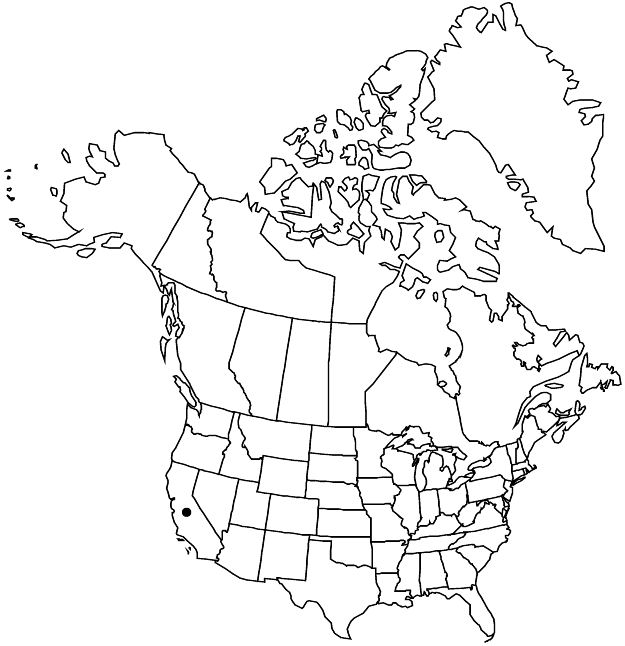Difference between revisions of "Euphorbia serrata"
Sp. Pl. 1: 459. 1753.
FNA>Volume Importer |
FNA>Volume Importer |
||
| Line 19: | Line 19: | ||
|name=Galarhoeus serratus | |name=Galarhoeus serratus | ||
|authority=(Linnaeus) Haworth | |authority=(Linnaeus) Haworth | ||
| − | }}{{Treatment/ID/Synonym | + | }} {{Treatment/ID/Synonym |
|name=Tithymalus serratus | |name=Tithymalus serratus | ||
|authority=(Linnaeus) Hill | |authority=(Linnaeus) Hill | ||
| Line 37: | Line 37: | ||
|elevation=0–300 m. | |elevation=0–300 m. | ||
|distribution=Calif.;Europe;Atlantic Islands (Macaronesia). | |distribution=Calif.;Europe;Atlantic Islands (Macaronesia). | ||
| − | |discussion=<p>Euphorbia serrata, native to the western Mediterranean region of Europe and Macaronesia, is listed as a noxious weed by the state of California. In the flora area, it has been found in coastal counties from Sonoma to Monterey counties; attempts to eradicate it may have been successful.</p> | + | |discussion=<p><i>Euphorbia serrata</i>, native to the western Mediterranean region of Europe and Macaronesia, is listed as a noxious weed by the state of California. In the flora area, it has been found in coastal counties from Sonoma to Monterey counties; attempts to eradicate it may have been successful.</p> |
|tables= | |tables= | ||
|references= | |references= | ||
| Line 62: | Line 62: | ||
|publication year=1753 | |publication year=1753 | ||
|special status=Weedy;Introduced | |special status=Weedy;Introduced | ||
| − | |source xml=https://jpend@bitbucket.org/aafc-mbb/fna-data-curation.git/src/ | + | |source xml=https://jpend@bitbucket.org/aafc-mbb/fna-data-curation.git/src/8f726806613d60c220dc4493de13607dd3150896/coarse_grained_fna_xml/V12/V12_1065.xml |
|genus=Euphorbia | |genus=Euphorbia | ||
|subgenus=Euphorbia subg. Esula | |subgenus=Euphorbia subg. Esula | ||
Revision as of 14:43, 18 September 2019
Herbs, perennial, with thick rootstock. Stems erect, branched, 10–70 cm, glabrous. Leaves: petiole absent; blade lanceolate, ovate-lanceolate, linear, or linear-lanceolate, 10–70 × 2–20 mm, base acute or obtuse, margins irregularly serrate, apex acute to obtuse, surfaces glabrous; venation inconspicuous, only midvein prominent. Cyathial arrangement: terminal pleiochasial branches 3–5, each 1–3 times 2-branched; pleiochasial bracts ovate-lanceolate, usually shorter and wider than distal leaves; dichasial bracts distinct, ovate or deltate, base obtuse to cordate, margins irregularly dentate, apex acute, or obtuse, mucronate; axillary cymose branches 0–3. Cyathia: peduncle 1–5 mm. Involucre campanulate, 2–4 × 1.2–3 mm, glabrous; glands 4–5, elliptic, ovate, or suborbiculate, 1.2–1.8 × 1.5–2.7 mm; horns absent or slightly divergent, 0–0.6 mm. Staminate flowers 20–40. Pistillate flowers: ovary glabrous; styles 1–2 mm, 2-fid. Capsules subovoid, 4.5–6 × 4–5 mm, 3-lobed; cocci rounded, smooth occasionally slightly puncticulate, glabrous; columella 4–4.5 mm. Seeds grayish, cylindric, 2.5–3.1 × 1.7–2 mm, smooth or slightly dotted; caruncle subconic, lobed, 1–1.5 × 0.5–1 mm.
Phenology: Flowering and fruiting spring–fall.
Habitat: Waste places, disturbed sites, roadsides, fields, pastures.
Elevation: 0–300 m.
Distribution

Calif., Europe, Atlantic Islands (Macaronesia).
Discussion
Euphorbia serrata, native to the western Mediterranean region of Europe and Macaronesia, is listed as a noxious weed by the state of California. In the flora area, it has been found in coastal counties from Sonoma to Monterey counties; attempts to eradicate it may have been successful.
Selected References
None.